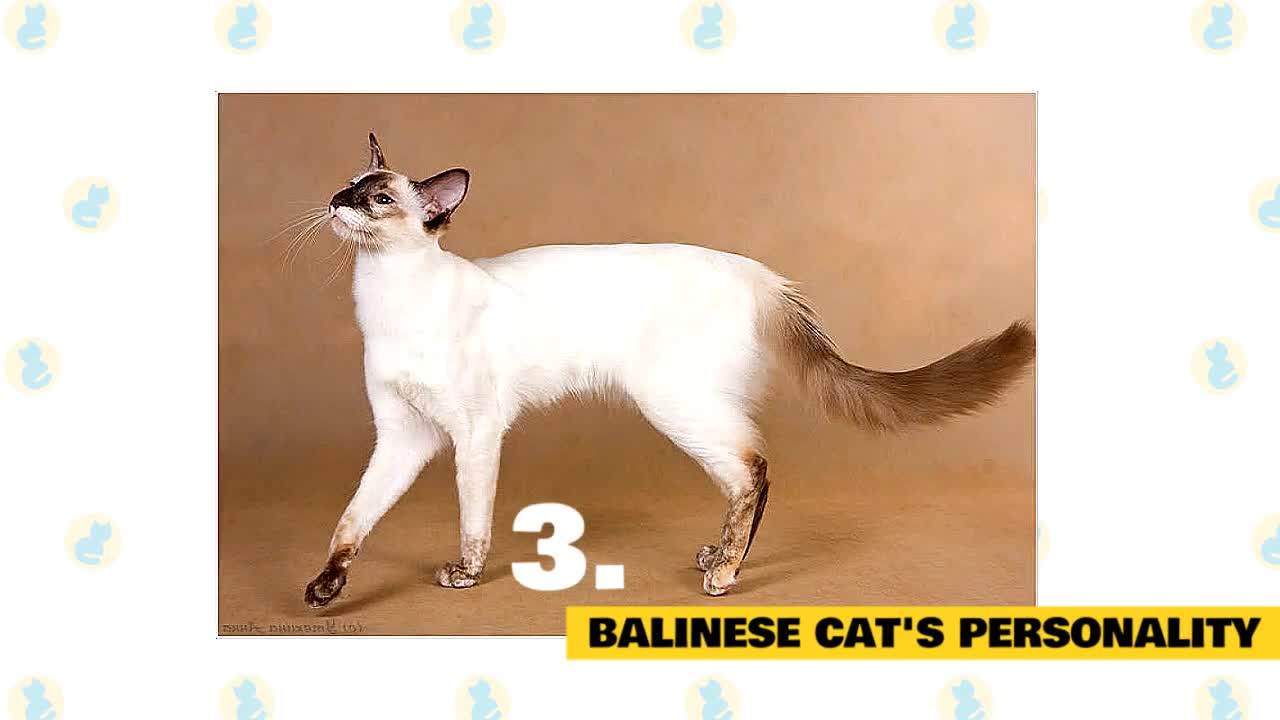Premium Only Content

Balinese Cats 101: Fun Facts & Myths
In today's video, we are going to talk about some interesting facts and myths about the Balinese Cat.
A lively cat, the Balinese is also loving and will sit quietly with her parent, purring, and being petted.
Named for the exotically graceful dancers on the Indonesian island of Bali, the Balinese is a longhaired variety of Siamese.
Balinese and Siamese cat breeds are very much alike, except for the cat’s fur length. The cat is called long-haired Siamese not in vain.
Balinese cats are playful, curious, and constantly up to something. At the same time, they’re loving, loyal, and sensitive.
Here are a few interesting facts about Balinese Cat, which will give you some further insight into its characteristics and temperament.
1. Balinese Cat's History.
Balinese cats originated from short-haired Siamese cats when long-haired kittens started to appear in their purebred offspring at the beginning of the 1930s.
The first officially registered long-haired kitten was born in a Siamese cat couple in 1928 in the USA. Such incidents happened quite regularly, but the breeders tried to keep this out of the public eye, and long-haired kids of their short-haired parents didn’t take part in cat shows.
The natural mutation has attracted the breeder's attention and they’ve started to cross mate such cats, earlier condemned as defective, with each other. This work was started by Helen Smith from New York and Marion Dorcy from California, who developed a selective breeding methodology.
In the relatively short term, the scientists achieved obtaining of pure line long-haired Siamese cats. The breed was first acknowledged in 19 63 and it was called the “long-haired Siamese” breed.
2. Balinese Cat's Coat.
The Balinese has a long hair coat that is described as soft and silky to the touch. Their coloring is colorpoint like the Siamese, which means a cream-colored body with another color on the feet, tail, and face. Their colorpoint varieties are blue, chocolate, cinnamon, cream, fawn, lilac, lynx, red, seal, smoke, tabby, and tortoiseshell. Despite their long hair, they are a low maintenance cat and are low shedders. The modern Balinese does not possess an undercoat so they only need a few weekly combings to keep their hair healthy. The original version has an undercoat and much thicker fur. Like all cats, they also need regular nail trimming, ear cleaning, and dental care. Their fur is sensitive to the cold and may turn darker if exposed to drafts.
3. Balinese Cat's Personality.
The Siamese and the Balinese might differ in coat length, but beneath the skin they are identical. Balinese are extremely fond of their people. They like to be “helpful” and will follow you around and supervise your every move. When you are sitting down, a Balinese will be in your lap, and at night he will be in bed with you, probably under the covers with his head on the pillow.
A Balinese is perhaps not quite as loud as his relative the Siamese, but he is most definitely just as opinionated. He will tell you exactly what he thinks, and he expects you to pay attention and act on his advice. You can also count on him to “tell-all” to visitors, so be grateful that most people are not conversant in the Balinese language.
The Balinese is highly intelligent, agile, and athletic, and loves to play. Keep his busy brain active with puzzle toys and his body exercised with teaser toys that he can chase and a big cat tree he can climb. He likes to play fetch, willing to walk on a leash and learns tricks easily. He is also a good trainer himself and maybe running your household before you know it. Never leave him without any form of entertainment, or you will likely come home to find that he has reprogrammed your D V R to record only nature shows or at the very least decided that your toilet paper rolls and tissue boxes look better empty.
4. Balinese Cats are not Hypoallergenic.
There are actually no cat breeds that are hypoallergenic, despite claims to the contrary. The Balinese produce the same type of dander as all cat breeds which causes human allergies. They may be a good option for mild allergy sufferers who still want a cat as they shed less than many other breeds.
-
 LIVE
LIVE
Badlands Media
11 hours agoDEFCON ZERQ Ep. 007
5,706 watching -
 LIVE
LIVE
FreshandFit
2 hours agoOwen Shroyer leaves Alex Jones But Here's the Truth!
1,381 watching -
 2:04:10
2:04:10
Inverted World Live
7 hours agoJapanese Memory Eraser | Ep. 101
67.9K17 -
 2:42:52
2:42:52
TimcastIRL
5 hours agoTrump To Deploy National Guard To Chicago, Baltimore, Democrats Call To Resist | Timcast IRL
202K51 -
 3:22:30
3:22:30
Laura Loomer
6 hours agoEP141: Muslims Call For Political Assassinations At Michigan Palestinian Conference
31.6K24 -
 4:39:32
4:39:32
Barry Cunningham
7 hours agoBREAKING NEWS: PRESIDENT TRUMP IS GOING TO TAKE CHICAGO! LFG!!! (IT'S MOVIE NIGHT!)
79.8K51 -
 1:23:59
1:23:59
Man in America
8 hours agoTrump Demands Big Pharma Come Clean on Covid Shots w/ Dr. David Martin
34K25 -
 1:40:27
1:40:27
megimu32
4 hours agoOTS: Labor Day Sitcom Blowout - Tim, Ray, & Relatable Chaos!
30K4 -
 4:09:30
4:09:30
StevieTLIVE
4 hours agoWarzone Wins w/ FL Mullet Man
24.5K1 -
 1:04:01
1:04:01
BonginoReport
8 hours agoLefties Wish Death on Trump but He’s BACK! - Nightly Scroll w/ Hayley Caronia (Ep.125)
183K83